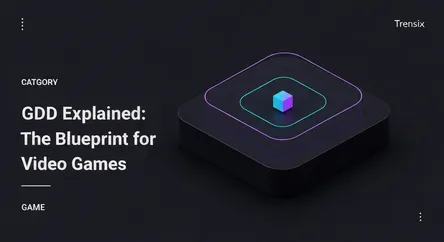Game
GDD Explained: The Blueprint for Video Games

What is a Game Design Document (GDD)? Discover the essential blueprint that guides the creation of every video game from concept to launch.
What is it?
A Game Design Document (GDD) is a comprehensive, living document that serves as the blueprint for a video game. It details every aspect of the project, including the core concept, gameplay mechanics, story, characters, art style, level design, and monetization strategy. The GDD is the central reference point for the entire development team—from programmers and artists to writers and sound designers—ensuring everyone shares a unified vision and understands their role within the project's scope.
Why is it trending?
The GDD isn't new, but its importance is being re-emphasized with the rise of independent development and remote teams. As more creators use accessible engines like Unity and Unreal, a solid GDD becomes critical for managing project scope and preventing 'feature creep'. It's also a vital tool for securing funding from publishers or investors, as it clearly outlines the game's vision, target audience, and potential for success. It formalizes ideas into a tangible plan, turning a hobby project into a professional endeavor.
How does it affect people?
For developers, a GDD is the single source of truth that minimizes confusion and costly mistakes, streamlining production. For publishers, it’s a key part of the pitching process, demonstrating a team's professionalism and the viability of their concept. Ultimately, a well-crafted GDD benefits the players. It helps ensure the final game is a cohesive, polished, and fun experience because the creative vision was clearly defined and consistently followed from the very beginning.